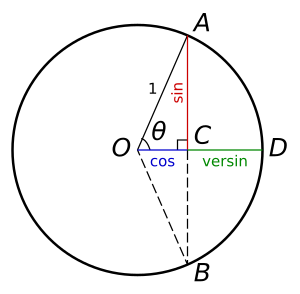Utilisateur:Renemax/Brouillon3

La méthode Hallade, conçue par l'ingénieur français Emile Hallade, est une méthode utilisée en tracé de voie pour rectifier les courbes des voies ferrées.[1]
Elle consiste à tirer une corde droite d'un point à l'autre d'une courbe et de mesurer l'écart entre le rail et le milieu de la corde. En réalité, la corde est trop épaisse pour donner une lecture claire et casse facilement sous la tension nécessaire pour effectuer la mesure. Une bobine de fil de fer peut aussi être utilisée à la place.
Les cordes utilisées sont de longueurs variables. En France, les cordes mesurent 20 mètres. Elles peuvent être réduite à 10 mètres pour des courbes de faibles longueurs. Au Royaume-Unis, elles ont une longueur de 30 mètres.
The versine of the chord, which is equal to this measured offset value can be calculated using the approximation of:
which is:
where
= versine (m),
= chord length (m),
= radius of curve (m)
This formula is also true for other units of measurement such as in feet. The relationship of versine, chord and radius is derived from the Pythagorean theorem. Based on the diagram on the right:
We can replace OC with r (radius) minus v, OA with r and AC with L/2 (half a chord). Then the rearrange formula to:
Since the curved tracks are usually large, the result of v/2 is very small. To simplify the formula, the approximation is:
The following can be used to find the versine of a given constant radius curve:[2]
The Hallade method is to use the chord to continuously measure the versine in an overlapping pattern along the curve. The versine values for the perfect circular curve would have the same number.[3] By comparing the surveyed versine figures to the design versines, this can then be used to determine what slues should be applied to the track in order to make the curve correctly aligned. This is often done using pegs which are driven into the ground in the cess beside the track to be aligned. The process of putting the pegs in the correct positions is known as 'setting out'. If the curve needs to be of a desired constant radius, which will usually be determined by physical obstructions and the degree of cant which is permitted, the versine can be calculated for the desired radius using this approximation. In practice, many track curves are transition curves and so have changing radii. In order to maintain a smooth transition, the differences in versines between consecutive half chords are measured and minimised.
The Hallade survey is a survey method that uses the same principle to measure the versines along an existing curve. Based on the versine values, the radius of that circular curved track can be approximated to:[4]
This method can be done manually, and this method is still used in the UK. However, due to the complexity of the calculations over long lengths of track, it is now often done by computer,[5] with the track geometry data being loaded straight onto a computer controlled tamping and lining machine for implementation.
See also[modifier | modifier le code]
References[modifier | modifier le code]
- (en) Simon Iwnicki, Handbook of Railway Vehicle Dynamics, CRC Press, (ISBN 0-8493-3321-0, lire en ligne), p. 448
- (en) Iain Ellis, The Hallade training manual, (lire en ligne)
- (en) compiled by Iain Ellis, Ellis' British railway engineering encyclopaedia: being a compendious reference of specialist engineering terms in common use upon the Railways of Britain, Raleigh, North Carolina, Lulu, (ISBN 978-1-84728-643-7, lire en ligne), p. 160
- : (en) Walter Mason Camp, Notes on track - Construction and Maintenance, Auburn Park, Chicago, Second Edition, Revised, (lire en ligne), 232
- « Rail Software » (consulté le )











